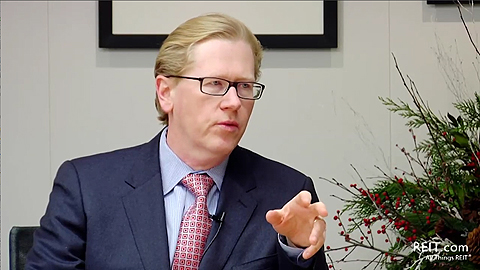 Class-A apartments, especially those in urban locations within primary markets, have again proven to be great assets to have in one’s portfolio. Rent growth has been torrid over the last couple years and near-term demand looks great—young, tech savvy (and cost effective) people are capturing more than their share of job growth. As a result, 24-year-olds are moving out of their parent’s basements in droves, taking their egalitarian ideals and iPads to fancy high-rise digs. In addition, their 28-year-old siblings are not interested in buying a house, and may not be for a couple more years. Therefore, those that are buying Class-A apartments downtown today are making savvy investments, right?
Class-A apartments, especially those in urban locations within primary markets, have again proven to be great assets to have in one’s portfolio. Rent growth has been torrid over the last couple years and near-term demand looks great—young, tech savvy (and cost effective) people are capturing more than their share of job growth. As a result, 24-year-olds are moving out of their parent’s basements in droves, taking their egalitarian ideals and iPads to fancy high-rise digs. In addition, their 28-year-old siblings are not interested in buying a house, and may not be for a couple more years. Therefore, those that are buying Class-A apartments downtown today are making savvy investments, right?
Well, in terms of income, the numerator side of the cap rate equation, recent evidence would say “yes.” In fact, 2011 CBD apartment rent growth of 8.2 percent spanked suburban apartment gains of 2.4 percent. And while rent gains have been very good, the rent level has become downright startling in some metros. Class-A rents in Chicago, Boston and D.C. are 10 percent or more over peak levels from the prior cycle.
The bigger potential problem with taking your money downtown lies on the denominator side of the equation—how much you pay for the asset. Buyer reported cap rates are very pricey downtown, averaging 6.7 percent in the CBDs versus 7.7 percent in the suburbs.
"The gulf between CBD and suburban trades reported is wider than it has ever been."
But, mind the gap! The gulf between CBD and suburban trades reported is wider than it has ever been. Even more telling is the price per unit. The average premium paid for a CBD apartment unit, versus a suburban one, averaged 120 percent since 2000, but recently stood at 225 percent—by far the widest gap on record. New York, San Francisco and Washington D.C. CBD rental projects built in the last 10 years averaged a stunning $600,000 per unit at the beginning of 2012, versus $550,000 on average at the peak of the market in 2006.
If it cost more to buy the asset than to build it, wouldn’t investors be better off sticking a shovel in the ground and having a shiny new building in two years. In Boston, there’s a plethora of CBD apartment projects underway, so developers seem to think so. High sale prices are inspiring construction even in downtowns with high barriers to supply, and that should impact rent growth when those buildings deliver.
Don’t get me wrong, apartments are a key component of a balanced portfolio for most institutional real estate investors, and most CBDs will not be oversupplied. That said, Adam Smith’s invisible hand is at work–don’t assume every tall shiny building downtown is worth the price.